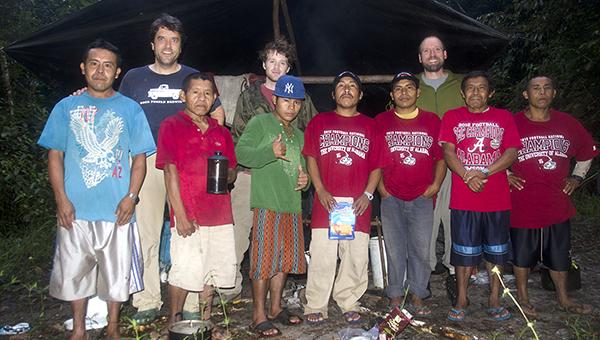Clark, who is currently on sabbatical for the semester after eight years of research, graduated with his Ph.D. from George Washington University in 2005, and is an associate professor at The University of Alabama and a curator for the herbarium.
“My research is discovering new species and also understanding that diversity in an evolutionary context,” he said. “We’re trying to find out who’s related to who and we’re trying to ?understand diversity in ?that context.”
Clark said he has always had a passion for biology and being out in the field.
“Going out in the field and documenting things, seeing things, photographing things, bringing them back and bringing them to their museum, that’s what I love,” he said. “Through these collections, we can understand ?their evolution.”
Clark, who makes many trips to Ecuador, spent six years living there, three of which were spent in the Peace Corps. The experience not only let him learn a new language and a new culture, but also allowed him to spend most of his time outside and to have many wilderness experiences.
“What I try to do in the course that I run is to provide students an Ecuadorian experience,” he said. “It’s more than just visiting a park, but meeting the people and seeing it. The Peace Corps provided that context for exploring that part of the world.”
Clark’s colleagues said when he gains new experiences, so ?do they.
“He really enriched my experience in the field helping me make it on the botany expedition in the Ecuador,” said Brian Keener, a colleague from the University of West Alabama. “He’s very astute in flora in the southeast tropics.”
Clark said he has a real passion for plants, which provides him with a closer connection to nature and the forests surrounding him.
“When I’m in the field and I know the plants that I’m looking at, I feel like I have a better experience outside,” Clark said. “It’s like knowing your natural surroundings. It’s like going to an Alabama football game and knowing ?the outcome.”
Clark not only has a passion for plants, but also has a plant named after him, which he found during his time in Ecuador. The plant, named Gustavia Johnclarkii, was found on a tree he used to climb during his time in the ?Peace Corp.
“After numerous emails, they finally took a look at it and said it was something they had never seen before so they named it after me,” Clark said.
Clark also acts as the curator for the herbarium in the museum. He oversees the plants and some of the algae.
Clark hosts a trip to Ecuador, giving students the opportunity to see and experience the Ecuadorian forests. Hiking anywhere from seven to 20 kilometers a day, he said trekking through the mud can be exhausting and one wrong step can put you knee deep in mud.
“My favorite part of the trip was definitely spending time in the forests despite the hikes being difficult,” Laura Clavijo, a CSC Student said. “The rainforests are really a spectacular place and it was great to be there.”
Clark is currently spending his sabbatical with his wife and three children in New Jersey, but will return to the University in ?the spring.







